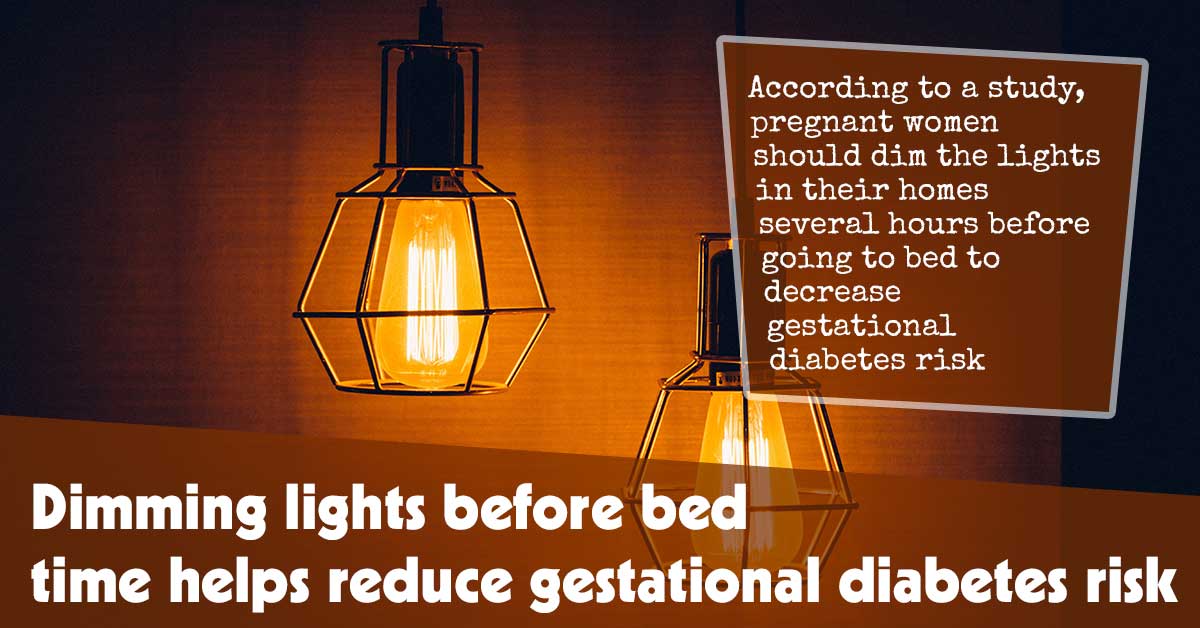According to a study, pregnant women should dim the lights in their homes and switch off, or at a minimum dim, the screens of their electronic devices several hours before going to bed to decrease gestational diabetes risk.
DOI: 10.1016/j.ajogmf.2023.100922
Women participating in the study who developed gestational diabetes had elevated exposure to light within the 3 hours before the onset of sleep. Their exposure to light in the day or while sleeping or their activity levels didn’t differ in comparison to individuals who didn’t develop gestational diabetes.
The results indicate that exposure to light before going to bed could be an underestimated but easily modifiable gestational diabetes risk factor.
Increasing evidence indicates that light exposure at night before going to bed could be associated with impaired regulation of glucose in non-pregnant individuals. Not much is however known about the impact that evening exposure to light throughout pregnancy has on gestational diabetes risk, a common pregnancy issue with significant health repercussions for the mother as well as the infant.
Gestational diabetes is increasing in the U.S. and worldwide. Approximately 4.5% of women who were pregnant for the 1st time and gave birth to an infant between 2011 and 2013 developed gestational diabetes, increasing by 3.4% every 3 years on average up until 2019. The gestational diabetes rate was 7.8% of all recorded births in 2020 in the U.S.
Gestational diabetes can result in obstetric complications and increase the risk of dementia, heart disease, and diabetes for the mother. The infant also has a higher risk of high blood pressure and obesity as they get older.
Data show that individuals who have gestational diabetes have almost 10 times the risk of type 2 diabetes in comparison to individuals who don’t have glucose issues throughout pregnancy.
Exposure to bright light before going to bed can originate from bright lights in the home as well as electronic devices such as smartphones, computers, and TVs.
The potential harm of a bright environment from the moment we awaken until going to bed isn’t consider. It should however be quite dim for a few hours before going to bed. That much light is probably not needed for anything in the evening.
Decreasing whatever light there is in the surrounding environment in those 3 hours before going to bed is recommended. Making use of a phone or computer during this period is best avoided, but if they have to be used, keep the screens as dim as possible, making use of the night light option and switching off the blue light.
If gestational diabetes is developed in the 1st pregnancy, individuals have a greater risk of having it in the following pregnancy. Pre-sleep exposure to light increases heart rate and could result in elevated blood pressure, insulin resistance, and abdominal obesity.
Pre-sleep exposure to light could affect glucose metabolism by means of sympathetic overactivity, indicating that the heart rate increases before bed when it should decrease. It appears that the fight or flight response is inappropriately activated when it’s time to rest.
Data indicate that sympathetic overactivity could result in cardiometabolic disease, a group of conditions that include an imbalance of lipids, elevated blood pressure, insulin resistance, and abdominal obesity, all resulting in cardiovascular disease.
The research involving 741 women in their 2nd trimester was carried out between 2011 and 2013. The exposure to light that the participants experienced was measured by a wrist-worn actigraph. Measurements were taken throughout the 2nd trimester of pregnancy, the time when the women received routine gestational diabetes screening.
After accounting for daytime exposure to light, sleep regularity index, sleep midpoint, sleep duration, season, employment schedule, commercial insurance, education, race/ethnicity, BMI, and age, pre-sleep exposure to light remained significantly linked to gestational diabetes.
The increasing gestational diabetes rate has been partly attributed to an increase in BMI and the older age of women who are pregnant.
Image by xegxef from Pixabay
Want to use our images on your site? Right click on image for embed code





















Discussion about this post